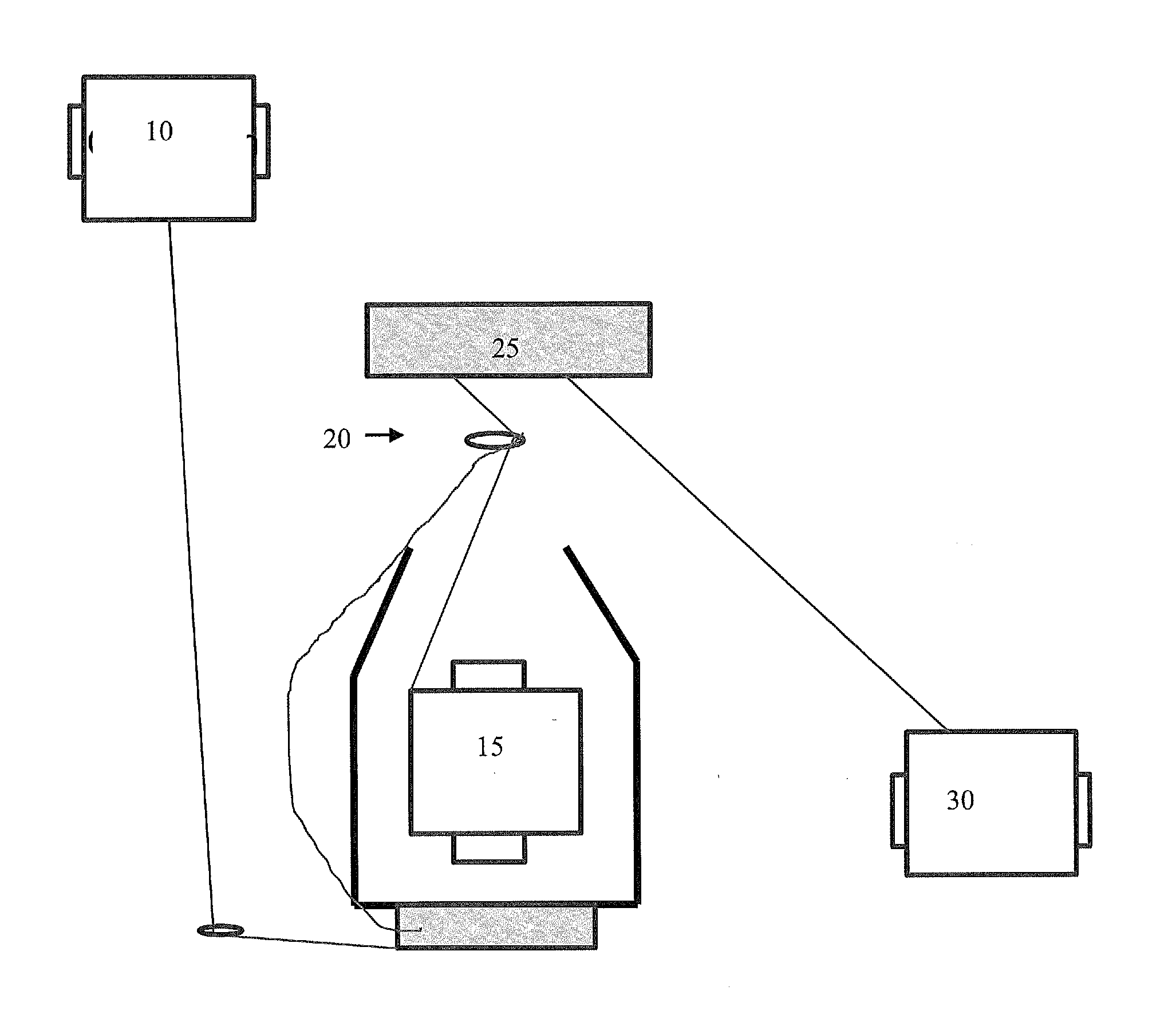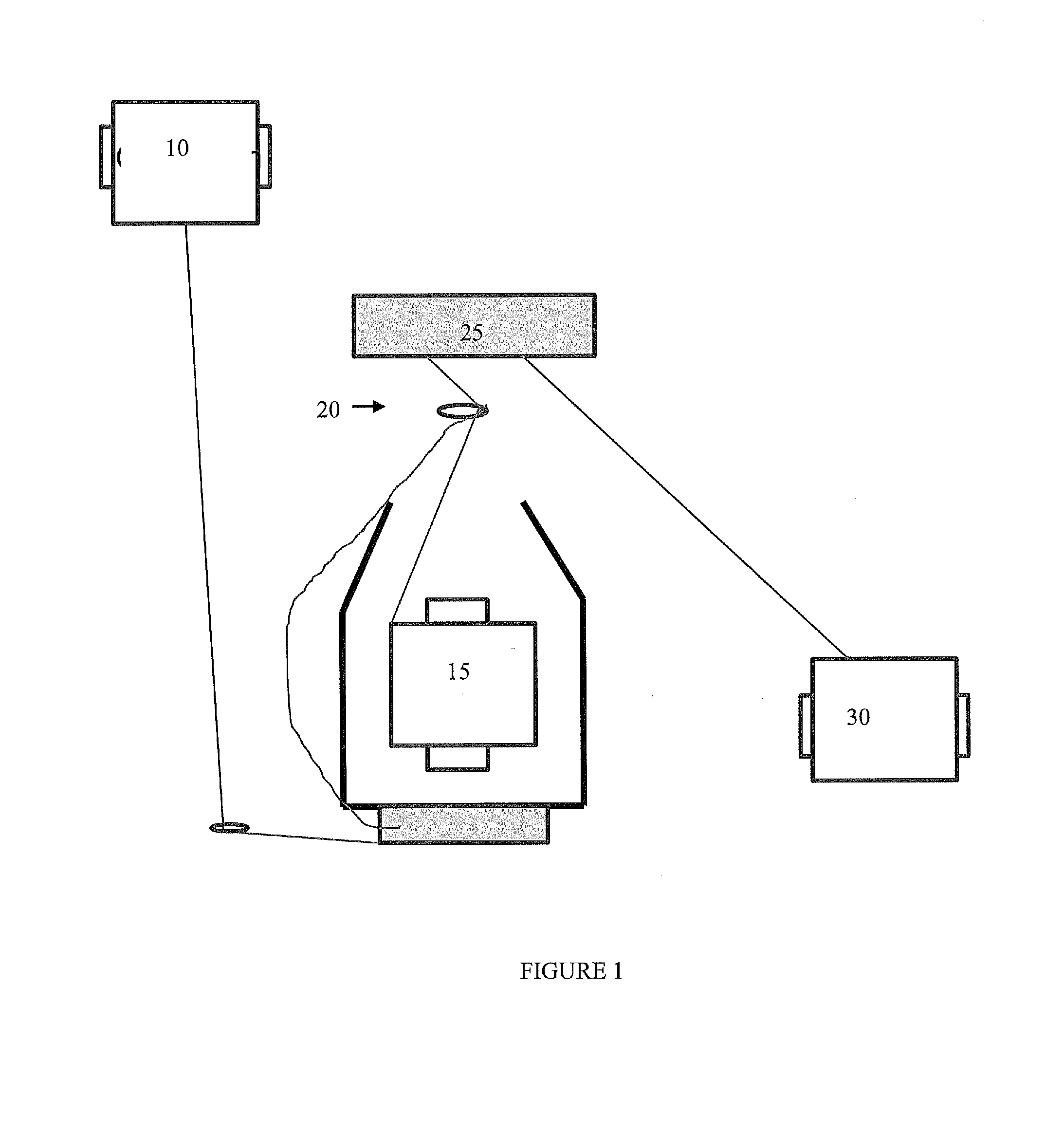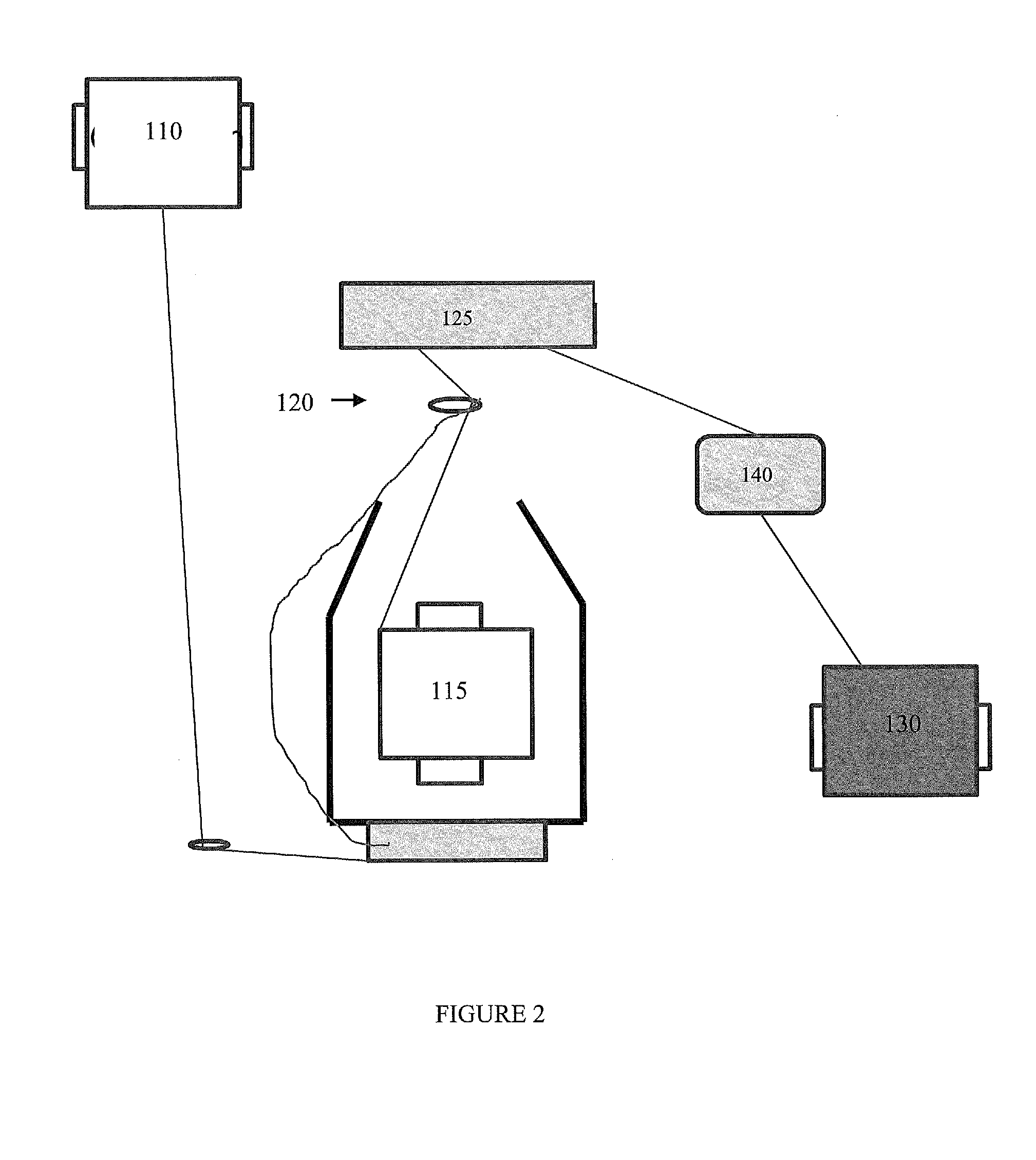Processes to dye and treat bcf yarn
- Summary
- Abstract
- Description
- Claims
- Application Information
AI Technical Summary
Benefits of technology
Problems solved by technology
Method used
Image
Examples
example 1
Comparative
[0059]Two 920 denier, 8 dpf, colorless nylon 6,6 BCF yarns were processed on a Volkman twisting machine as described in FIG. 1 to form a 5.75 tpi (twist per inch) 2-ply cable twisted yarn. The twisting speed was about 7000 rpm (turns per minute) and winding speed was about 50 meter per minute. The cable twisted yarn had no color. The cable twisted yarn was heatset on Superba, and converted into cut pile carpet on a ⅛ ga tufting machine to 22 / 32 inch pile height, 35 oz / sq yard carpet and dyed on a continuous dye line to get medium pie crust color. This example was made using the state of art carpet making process with continuous dyer to add color to carpet.
example 2
Inventive
[0060]Two 920 denier, 8 dpf, colorless nylon 6,6 BCF yarns were processed on a Volkman twisting machine as described in FIG. 2 to form a 5.75 tpi (twist per inch) 2-ply cable twisted yarn. A wicking dye applicator was inserted between take up roll and winder. A % inch wide, 1 inch thick cotton wick (Wet Wick by Perperell MA) was used to apply a mixture of acid dyes (Blue 4R @ 5.0 g / l & Orange 3G @ 2.0 g / l in deionized water, pH 9.47) onto the cable twisted yarn. The twisting speed was about 7000 rpm (turns per minute) and winding speed was about 50 meter per minute. The cable twisted yarn was heatset on Superba at 265° F., and tufted into cut pile carpet on a ⅛ ga tufting machine to 22 / 32 inch pile height, 35 oz / sq yard carpet. The tufted carpet had medium shade green color (L 51.26, a −9.71, b+1.45 by Minolta).
example 3
Inventive
[0061]Two 920 denier, 8 dpf, colorless nylon 6,6 BCF yarns were processed on a Volkman twisting machine as described in FIG. 2 to form a 5.75 tpi (twist per inch) 2-ply cable twisted yarn. A wicking dye applicator was inserted between take up roll and winder. A ½ inch wide, 1 inch thick cotton wick (Wet Wick by Perperell MA) was used to apply a mixture of acid dyes (Orange 3G @ 5.712 g / l, Red 2B @ 2.52 g / l, Blue 4R @ 2.268 g / l in deionized water, pH 6) onto the cable twisted yarn. The twisting speed was about 7000 rpm (turns per minute) and winding speed was about 50 meter per minute. The cable twisted yarn was heatset on Superba at 265° F., and tufted into cut pile carpet on a ⅛ ga tufting machine to 22 / 32 inch pile height, 35 oz / sq yard carpet. The tufted carpet had light shade brown color (L 39.17, a 10.48, b 18.14 by Minolta). There were numerous dark, medium and light spots randomly distributed over the carpet that created an interesting salt and pepper toner mixture e...
PUM
| Property | Measurement | Unit |
|---|---|---|
| Temperature | aaaaa | aaaaa |
| Temperature | aaaaa | aaaaa |
| Fraction | aaaaa | aaaaa |
Abstract
Description
Claims
Application Information
 Login to View More
Login to View More - R&D
- Intellectual Property
- Life Sciences
- Materials
- Tech Scout
- Unparalleled Data Quality
- Higher Quality Content
- 60% Fewer Hallucinations
Browse by: Latest US Patents, China's latest patents, Technical Efficacy Thesaurus, Application Domain, Technology Topic, Popular Technical Reports.
© 2025 PatSnap. All rights reserved.Legal|Privacy policy|Modern Slavery Act Transparency Statement|Sitemap|About US| Contact US: help@patsnap.com



